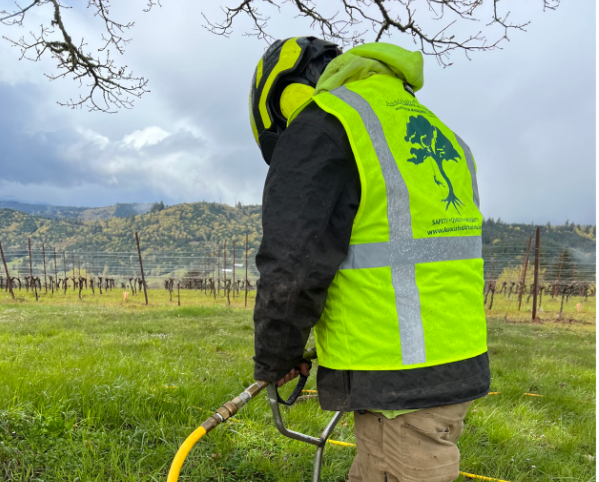Spring Tree Care & Pst Management
by rtadmin | Jun 13, 2023 | Blog


Wondering Why Your Trees are Struggling?
We Can Help!
From diagnosis to treatment, our certified arborists will help your trees thrive for years to come. Our Plant Health Care specialists include ISA-Certified Arborists and licensed commercial pesticide applicators. They are trained experts in the different plant species, soil types, weather, pests, diseases, and pH or nutrient issues. This local knowledge is critical to ensuring that your plants and landscape thrive.

Pest Management
It’s springtime and our trees and shrubs are waking from dormancy to produce beautiful budding flowers. But along with these lovely blooms can come havoc-wreaking insects, fungus, and bacteria.
Hiring pest management tree services from an arborist not only staves off these nuisances but is an investment in your property as pests can cause significant problems by weakening or killing trees and shrubs.
Some common tree and shrub pests include:
- Aphids – A common pest that damages plants, leaving behind curled or yellowed leaves, deformed flowers, or damaged fruit. Oak, Maple, Linden, Sweetgum, Beech, and Birch trees are most susceptible
- Flowering Tree & Shrub Disease – Anthracnose is a condition that stems from a fungus that attacks the tree’s leaves, twigs, flowers, and fruits. Sycamore and flowering dogwood are the most heavily impacted
- Bronze Birch Borer – A destructive beetle, which has been decimating birch trees in ‘Yamhill County, causes off-color and sparse foliage, dead branches, and swollen ridges on trees’ trunks or branches.
The best approach to managing pests is by continually monitoring your landscaping. Healthy plants and trees will have a greater chance of fighting off pests, and regular monitoring will catch problems before they get out of hand. You should consult the friendly tree care professionals at Associated Arborists if you notice vegetation with these issues:
- Thinning of leaves, needles, and canopy
- Yellowish, wilting, spotted, discolored, or dying leaves
- Strangely-sized leaves
- Holes cut into leaves
- Sawdust around the tree
- Loose bark
- Roots lifting up
- Inhibited growth of tree limbs
- Tunnels or exit holes in the inner bark
- White fungal growth or sores on the tree
- Frail, broken, or dead branches
Once the problem is identified, our ISA-Certified arborists will create a plan to treat or manage the pests to protect the health of your plants. If the disease or infestation has progressed too far, we may need to remove the entire tree for safety reasons and to limit the pests from spreading.

Arborist Advice
SPRING TREE CARE
Spring is the best time to prune flowering and ornamental trees and shrubs. Most spring flowering trees produce their blooms on old wood: buds that formed on the previous year’s growth. Examples of these are lilac, forsythia, and rhododendron. Prune once their flowers have finished blooming, there will be a couple of weeks after flowering to get pruning done before next season’s buds begin to set. This pattern allows the plants to begin producing the new wood that will set the buds to create next spring’s flowers.
OTHER SPRING PLANT HEALTH CARE TO-DO’S
Prune: Examine the tree’s appearance: check for dead wood, frostbite, or leaf lesions. Prune away any dead, damaged, or diseased foliage
Water: Make sure the tree has sufficient water and nutrients for a strong growing season. Deep watering prevents weak surface roots from forming and encourages the growth of sturdy roots underground
Mulch: Check mulch levels and replenish as needed. Use mulch to help conserve moisture and to suppress weeds
Clear out weeds: Remove weeds, competing plants, and debris from the base of the trunk Excess debris can hide areas of decay on the tree and can trap moisture around the root crown